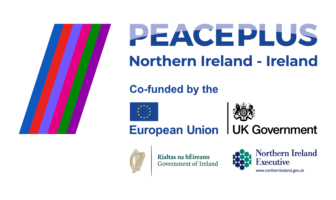Passivhaus (or Passive House) is an energy-efficient building standard that provides numerous environmental benefits. Some key advantages to this building standard include significantly reduced energy consumption and emissions, resulting in lower energy bills, the use of sustainable materials, improved indoor air quality, and greater resilience to climate change.
The Belfast-based property developer Fraser Millar has launched Northern Ireland's second large scale residential Passivhaus Certified development. The scheme, valued at approximately £30 million, is situated on Comber Road in Carryduff. Beaufort Green is the latest project by Fraser Millar, following the success of their first Passivhaus development, Lancaster Park, in south Belfast. The first property completions are expected by late 2024.
Lancaster Park is a project consisting of 219 homes built to Passive House Low Energy Building standard. The first homes were completed in 2022. The project and developer, Fraser Millar, were recognised for this accomplishment, winning several awards, including Green Development of the Year at the Property Pal Awards, and Climate Company of the Year at the Belfast Telegraph Property Awards.
The passive homes are essentially airtight, allowing the heat that is generated in the home to stay in the home, as opposed to traditional builds that have lower airtight standards, where more heat escapes. Mechanical Ventilation and Heat Recovery are used to provide continuously filtered, warmed fresh air. The benefits of this are better indoor air quality and no reliance on fossil fuel-burning boilers, significantly reducing carbon emissions.
Looking for something?
To search, start typing and hit enter.
Case Study
Case Study
Northern Ireland's second large scale residential Passivhaus Certified development
Passivhaus (or Passive House) is an energy-efficient building standard that provides numerous environmental benefits. The Belfast-based property developer Fraser Millar has launched Northern Ireland's second large scale residential Passivhaus Certified development.

Nichola Hughes
Posted
8th Nov, 2024
Length
3 minute read
Type
Case studyInformation
Location
Carryduff
Partners
Fraser Millar
Project Status
Complete 2024
Impact Areas
Built Environment
Carbon Footprint Reduction
Energy Efficiency
Air Quality
Social Engagement
Climate Resilience
Related Links
Tags
Share
Highlights
- Energy Efficiency - Reduced Energy Consumption, Lower Carbon Emissions, Lower Energy Costs
- Sustainable Resource Use - Renewable Energy Integration, High-Quality Insulation
- Improved Air Quality - Reduced Pollution, Mechanical Ventilation and Heat Recovery
- Durability and Longevity - Sustainable Materials
- Resilience to Climate Change - Maintain a stable indoor temperature with minimal energy use making homes more resilient to extreme weather conditions and temperature fluctuations
















